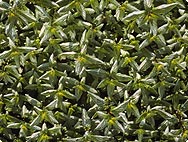A.Vogel search
When the internal search is activated, personal data such as your IP address is transmitted to our search engine Cludo. Data is thus transferred to a third country. Please click here if you want to display the internal search. You can find more information on data protection here: Privacy policy.
Mentha x piperita L.
Peppermint
History

According to Greek mythology, the nymph Menthe was turned into the plant, which explains water mint’s preference for moist locations. The Latin word mentha and the Greek word minthé are derived from a pre-Indo-European language. The species name piperita is derived from the New Latin word piperitus, which means ’pepper-like’. Species of mint were used in Ancient Chinese medicine; they are amongst the oldest cultivated medicinal plants. The Japanese have used menthol as a medication for 2000 years Pieces of mint were found in Abd-el-Quarnah in ancient Egyptian graves from the period 1200-600 B.C. Dioscorides described mint as beneficial to the stomach. His contemporary Pliny recommends mint for abdominal pain and gall bladder ailments: ”it alleviates stomach pain and gets rid of intestinal worms”. The officinal peppermint is a three-way hybrid of three species of mint that is expressed by the ’x’ in the Latin name: ADD GRAPHICS The documented history of peppermint begins in 1696. The English physician Dr. Eaton, of Hereford, observed the cultivated species, whereupon it was described by the Englishman Ray in the ’Synopsis stirpium britannarum’ under the name Mentha palustris, Marsh Mint. As early as 1721, the plant appeared under the name Mentha piperitis sapore in the pharmacopoeia of the city of London. Around the same time, it was introduced to Central Europe by doctors where, along with chamomile, it became the most frequently used medicinal plant.
Botanical characteristics

The plant has a distinctively square, stem that grows to a height of between 40cm and 80cm and branches profusely at the top. The dark green, sometimes slightly reddish leaves are lanceolate to elliptical, opposed, and toothed. Spike-like, pink to lilac-coloured inflorescences adorn the ends of the stem. The entire plant has a spicy aromatic smell and taste. Peppermint flowers from June to August. Peppermint reproduces exclusively vegetatively via head cuttings and rhizomes. As a hybrid, peppermint cannot be propagated by seeds, since these often revert to their original forms. Among the cultivated species, the potent ‘Mitcham Mint’, primarily grown for its essential oil, is distinguished from the milder ’Palatine Peppermint’, used for tea infusions.
Habitat

Today, peppermint is cultivated in all temperate climate zones. Large amounts are grown in the Balkans. Peppermint is very selective about location. It thrives to an elevation of about 1000 metres and prefers a loose, humus-rich soil in a sunny location. After three years, the amount of active substances produced is considerably lower, so the plant must be replaced with new cuttings.
Preparation

Bioforce/A.Vogel uses a maceration from the fresh, flowering, aboveground parts of the plant grown in our own controlled organic cultivation, the dried leaves and also the essential oil extracted by steam distillation. It is harvested in June and July. Peppermint and its volatile oil are used in many ways, internally and externally. In England, the Balkans, the Orient, and India, fresh peppermint leaves are used as a seasoning for a wide variety of foods. The oil is used in large quantities in the cosmetic, pharmaceutical, and food industries (chewing gum, cough drops, liqueurs, etc.).
A.Vogel Blog – Natural and Healthy
Inspiration for a healthy life!




